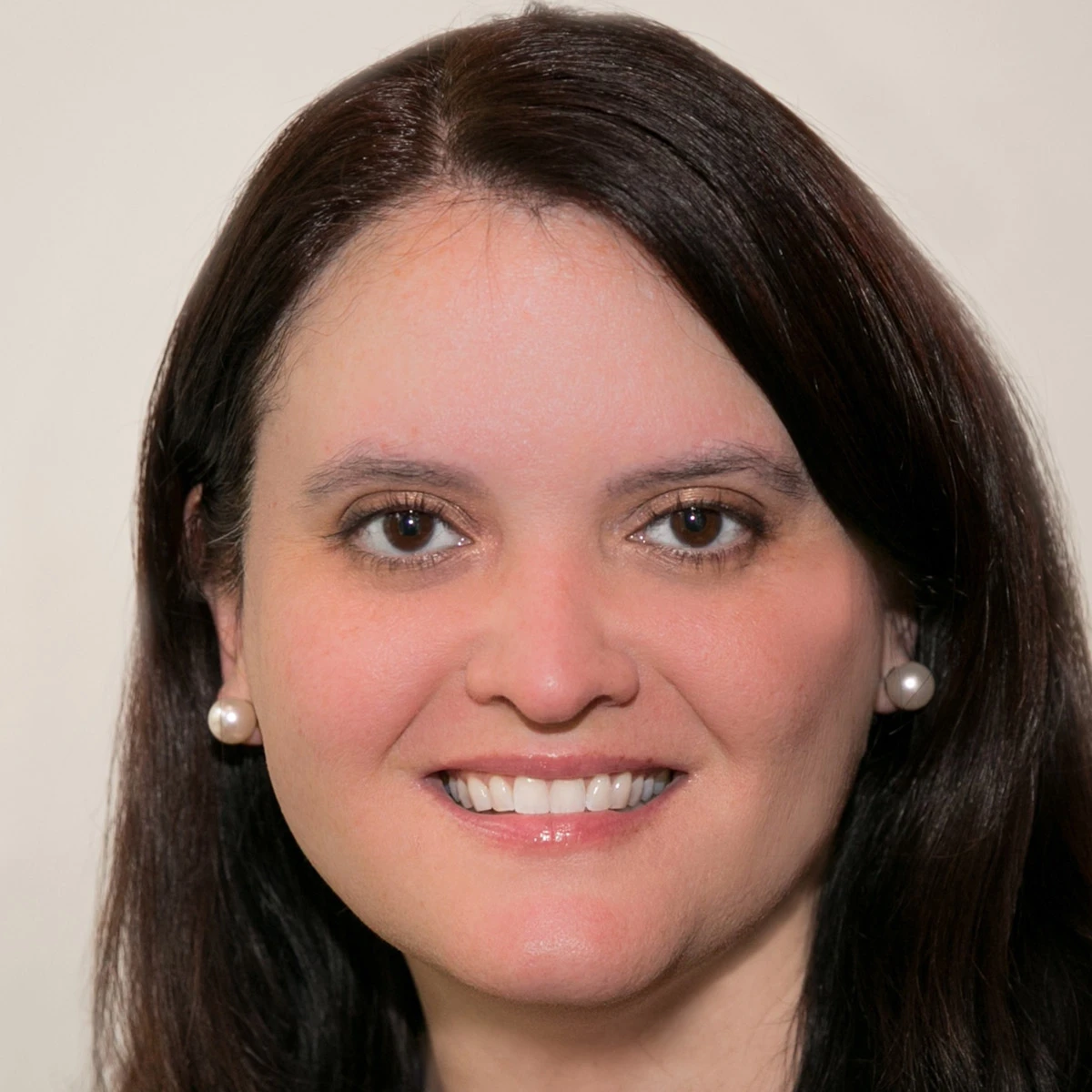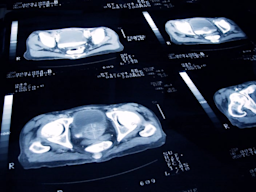Key takeaways:
BRCA1, BRCA2, and PALB2 are inherited gene mutations that can increase your risk of developing certain cancers, like breast cancer.
Deciding if breast cancer genetic testing is right for you depends on many factors, and working with a genetic counselor can help.
Not everyone with a harmful gene will develop cancer, and there are steps you can take to lower your risk.
Testing positive for a breast cancer gene mutation — like BRCA1, BRCA2, or PALB2 — can come as a shock. These are three of breast cancer’s many mutations, which can cause breast cancer and increase the risk of other cancers. Finding out that you or a close family member has one of these gene mutations is likely to cause some major life changes. One consequence is that you’ll probably need different cancer screenings than other people your age — especially for breast cancer. Here we’ll walk you through what you can expect — and what to ask your healthcare team.
What are BRCA1, BRCA2, and PALB2 genes?
Let’s start with what a gene is. Genes are the DNA you inherit from your parents. They give your body instructions on how to function. Sometimes genes will have permanent changes in them called “mutations.” These mutations can increase your risk of developing certain cancers, like breast cancer. In fact, about 5% to 10% of all breast cancers are from inherited genetic mutations.
BRCA1, BRCA2, and PALB2 are three different genes that every person has. When working properly, these genes help prevent certain cancers from growing in your body:
BRCA1 and BRCA2 (which stand for “Breast Cancer gene 1 and 2”) help make certain proteins called “tumor suppressors.” These proteins help prevent your cells from growing into cancer.
PALB2 (which stands for “Partner and Localizer of BRCA2”) works with BRCA2 to repair DNA damage that normally happens in your cells.
But if you inherit a version of one of these genes that contains a harmful mutation, the gene may not protect you from cancer the way it normally does. So when people inherit mutations in the BRCA1, BRCA2, or PALB2 gene, they are more likely to develop certain cancers, like breast cancer. People of any gender can be affected by these genes.
Can I have the breast cancer gene mutations if my mother doesn’t?
Yes. You inherit two copies of every gene — one from your biological mother and one from your biological father. This means you could inherit a harmful breast cancer gene from your father, even if your mother doesn’t have it.
Testing for BRCA1, BRCA2, and PALB2
You can get genetic testing through a blood sample from a vein in your arm or through a sample of your saliva with a swab.
There are also tests you can take at home, called “direct-to-consumer” tests. But these tests may only give limited information about your breast cancer risk. For example, they might only test for three BRCA gene mutations, even though there are over a thousand. They also don’t consider non-genetic factors that can increase your risk (like not being physically active).
How long does breast cancer genetic testing take?
It depends on where you get the test done. Commercial labs usually give results in 2 to 4 weeks, but research centers may take a bit longer.
What does it mean if you have BRCA1, BRCA2, or PALB2 gene mutations?
If you test positive for the BRCA1, BRCA2, or PALB2 gene mutations, it’s normal to feel anxious. But it’s important to keep a few things in mind. Many people with these mutations don’t develop breast cancer. For those who do, getting diagnosed early makes treatment more successful. Your healthcare team will support and guide you through the whole process.
Read more like this
Explore these related articles, suggested for readers like you.
Next we’ll answer some common questions about having these breast cancer genes.
Increased risk of certain cancers, including breast cancer
Below we’ll review the chances of getting cancer from inheriting each gene. Keep in mind that without these mutations, the average woman has about a 13% chance (roughly 1 in 8) of getting breast cancer in her lifetime, and the average man has a less than 1% chance.
BRCA1
| Cancer type | Women | Men |
|---|---|---|
| Breast | 60%-75% | 1%-5% |
| Ovarian | 30%-50% | -- |
| Pancreatic | 2%-3% | 2%-3% |
BRCA2
| Cancer type | Women | Men |
|---|---|---|
| Breast | 50%-70% | 5%-10% |
| Ovarian | 10%-20% | -- |
| Prostate | -- | 15%-25% |
| Pancreatic | 3%-5% | 3%-5% |
| Melanoma | 3%-5% | 3%-5% |
PALB2
| Cancer type | Women | Men |
|---|---|---|
| Breast | 45%-65% | Less than 1% |
| Ovarian | 5% | -- |
| Pancreatic | 3% | -- |
Earlier and more frequent breast cancer screening
If you inherited any of the mutated breast cancer genes, you have an increased risk of getting breast cancer. This means you should get breast cancer screening earlier and more often than other women.
Some medical organizations have slightly different guidelines for when you should start getting screened. And there’s also some disagreement over whether a clinical breast exam helps with the screening process. This is because there’s no strong evidence to suggest breast exams improve cancer detection. And what’s more, they may lead to unnecessary testing when you feel a lump that’s normal. For this reason, the American Cancer Society doesn’t recommend clinical breast exams. But the American College of Obstetricians and Gynecologists recommends that yearly clinical breast exams be an option for women over the age of 25.
You should talk to your provider to see what’s best for you, but here are some basic recommendations to give you an idea of what to expect:
If you’re a female with the BRCA1 or BRCA2 mutation
Breast MRI: every year starting at age 25
Mammogram: every year starting at age 30 (or at age 25 if MRI isn’t available)
If you’re a female with the PALB2 mutation
Breast MRI: every year starting at age 30
Mammogram: every year starting at age 30
If you’re a male with the BRCA1 or BRCA2 mutation
Baseline mammogram: starting at age 40 (further testing depending on the situation)
If a breast MRI can’t be done for medical reasons (e.g. you have a pacemaker), options may include a breast ultrasound or special contrast-enhanced digital mammogram.
Preventive treatment options
There are options to help decrease the chances of developing breast and other cancers. This includes things like preventive surgeries and medications. Keep in mind that these options have their own risks and benefits. They lower — but don’t eliminate — the risk of cancer. Preventive options include:
Double mastectomy: removes both breasts
Salpingo-oophorectomy: removes the ovaries and fallopian tubes
Chemoprevention: involves taking different medications, like tamoxifen or raloxifene (Evista)
If someone with a breast cancer gene mutation develops cancer, the treatments may also be different. For example, they may be more likely to:
Develop triple-negative breast cancer, which doesn’t respond as well to certain treatments
Choose to remove both breasts (double mastectomy) when undergoing surgery for their breast cancer
Respond to newer treatments for people with BRCA1 or BRCA2, like olaparib (Lynparza)
Who should get genetic testing for breast cancer?
Deciding whether or not to get genetic testing for breast cancer is a personal decision. Talking to a genetic counselor can help you weigh your options and decide if it’s right for you.
Here are some general guidelines on who should consider getting tested for breast cancer gene mutations. Keep in mind that many people with no (or a limited) family history of breast cancer don’t carry these genes.
You may consider genetic testing if you:
Have been diagnosed with a second, separate breast cancer (not a recurrence of your first cancer)
Got breast cancer at a young age (especially if it’s triple-negative breast cancer)
Are a female with ovarian or pancreatic cancer
Are of Ashkenazi Jewish descent
Have a known cancer gene mutation in your family
Are female with ovarian or pancreatic cancer
Are male with breast cancer, pancreatic cancer, or high-grade/metastatic prostate cancer
Have a family history of breast cancer in several people, in a male, or that was diagnosed at a young age
Have close family members with ovarian cancer, pancreatic cancer, or metastatic prostate cancer
At what age should genetic testing be done?
There are no definitive answers to this. Some recommendations include getting tested around the age when screening would start if you had the gene. For example, that would be about 25 years old for women and mid-30s for men. Other people may choose to get screened even earlier. In general, testing children under the age of 18 isn’t recommended.
What are disadvantages of getting breast cancer genetic testing?
Here are some risks, or disadvantages, of getting breast cancer genetic testing done. Working with your provider or a genetic counselor can help address all of these concerns:
Experiencing fear, anxiety, or disbelief if the test is positive
Feeling guilty if the test is negative, and other family members’ tests are positive (called “survivor guilt”)
Having a false-negative test (meaning the test is negative, but you really have the gene)
Having a false-positive test (meaning the test is positive, but you don’t actually have the gene), although this is very rare
Fearing discrimination by insurance companies or employers
How much do BRCA1, BRCA2, and PALB2 genetic tests cost?
The cost can range from about $250 to several thousand dollars. The cost depends on what lab is doing it and how many genes are being tested. Some tests will look for a certain mutation that runs in your family. Other tests may look for a large number of mutations.
Your provider or a genetic counselor can help you figure out what test is best for you.
Does insurance cover genetic testing?
Under the Affordable Care Act (ACA), BRCA testing and genetic counseling for women with certain risk factors must be covered with no copayment. Other mutations, like PALB2, don’t have to be covered, so be sure to check with your insurance provider.
If you don’t have insurance, or it’s not covered under your insurance, you still have options. Some labs may offer free or reduced testing, and some hospitals may have charity funds to help with certain costs.
The bottom line
About 5% to 10% of breast cancer is caused by genes that can run in families. BRCA1, BRCA2, and PALB2 gene mutations are three of the more well-known mutations that can increase your risk of developing certain cancers, such as breast cancer. If you have specific risk factors, like a family member with a gene mutation, you should consider getting genetic testing. Knowing you have a breast cancer gene mutation can help you take steps to lower the risk of developing it.

Why trust our experts?


References
American Cancer Society. (2021). Genetic counseling and testing for breast cancer risk.
American Cancer Society. (2022). Key statistics for breast cancer.
Basser Center. (n.d.). BRCA overview.
Basser Center. (n.d.). Insurance & costs.
Breastcancer.org. (2016). Deciding who in the family should get tested.
Breastcancer.org. (2017). Getting genetic test results.
Breastcancer.org. (2020). Testing positive for less common gene abnormalities.
Centers for Disease Control and Prevention. (2020). Genetic counseling.
Centers for Disease Control and Prevention. (2020). Medical options for women with BRCA1 and BRCA2 mutations.
Centers for Disease Control and Prevention. (2020). Taking a genetic test on your own: What you need to know.
Centers for Disease Control and Prevention. (2021). What are the risk factors for breast cancer?
Dalivandan, T. S., et al. (2021). Risks and function of breast cancer susceptibility alleles. Cancers.
DePolo, J. (2021). Breast cancer risk drops within 5 years of prophylactic ovary and fallopian tube removal in women with BRCA mutations. Breastcancer.org.
Harris, W. J. (2017). When to tell daughters about a genetic breast cancer risk. The New York Times.
Healthcare.gov. (n.d.). Preventative care benefits for women.
Lynch, T. H. et al. (1999). Pros and cons of genetic screening for breast cancer. American Family Physician.
McKenna, D. (2019). Genetic counselor takeover: What age should you be tested for a BRCA mutation? Basser Center.
Medline. (2021). What is a gene?
National Cancer Institute. (n.d.). Definition of Ashkenazi Jews.
National Cancer Institute. (2020). BRCA gene mutation: Cancer risk and genetic testing.
PALB2 Interest Group. (n.d.). PALB2 mutation and cancer risks.
Susan G. Komen. (2021). Breast cancer screening tests for women at higher risk.
Susan G. Komen. (2021). Emerging areas in early detection.
University of Michigan Health. (2020). Breast cancer: What should I do if I'm at high risk?
















